News

| Post | Link |
|---|---|
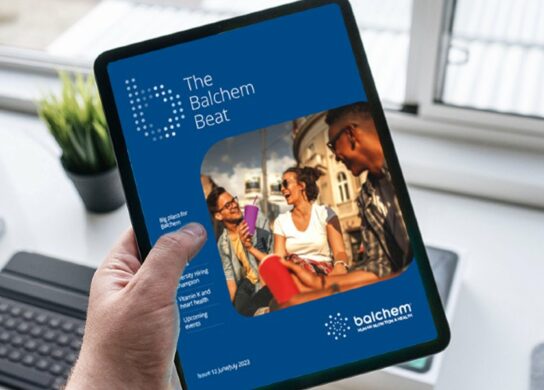
February 19, 2024Balchem Beat
Check out the latest Balchem Human Nutrition and Health news, highlights, and updates! Please enjoy our monthly newsletter, the Balchem … |
|

April 16, 2024Unlocking the Power of Essential Minerals for Immune Health
Helping our immune system function optimally requires a multifaceted approach, with proper nutrition playing a central role. While numerous nutrients … |
|

April 15, 2024Unlocking the Power of MSM for Bone & Joint Health
Are you an active adult between the age of 45-75 and seeking ways to fortify your joint health and support … |
|

April 3, 2024Unveiling our Refreshed Brand Image Centered on Powering Performance and Maximizing Health Span
Montvale, New Jersey, (9 April, 2024) – We are pleased to announce, our Balchem Human Nutrition and Health (HNH) Team … |
|

March 26, 2024The Sleep Solution: How Magnesium Can Help You Achieve Restful Nights
“Make sure to get enough sleep.” We all hear this line repeatedly in an effort to ensure we get our … |
|

March 21, 2024Optimizing Cognitive Performance
A Guide to Lifestyle and Nutrients for Brain Health and Cognitive Performance As an ambitious individual, you’re constantly juggling tasks … |
|

March 4, 2024TrenDish™ Bakery Concepts
Bakery Tasting Concepts Transform any bakery item into a unique work of art and flavor! INhance™ Inclusions bring baked goods … |
|
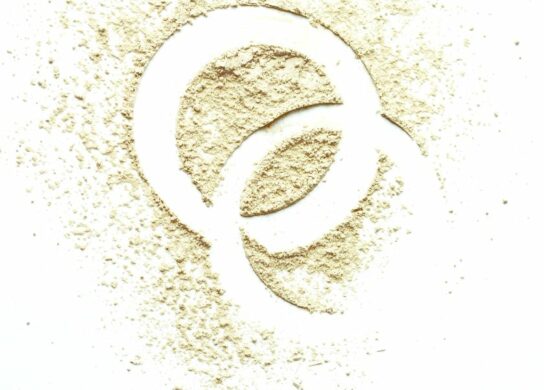
February 27, 2024Balchem appoints Stauber Performance Ingredients as the Preferred Distributor for Albion® Minerals, OptiMSM®, VitaCholine® and VitaShure® in USA and Canada
Montvale, New Jersey (22 February, 2024) – Balchem, a global manufacturer of specialty ingredients for human nutrition and health (HNH), … |
|

February 22, 2024Balchem Partners With Virginia Tech to Investigate Mineral Nutrition on Human Health
Montvale, New Jersey, (22 February, 2024) – Balchem, a global manufacturer of specialty ingredients for human nutrition and health (HNH), … |
|

February 22, 20242024 Flavors: TrenDish™ Ice Cream and Variegate Flights
2024 TrenDish™ Ice Cream & Variegate Flights Our 2024 new flavors are here! Embark on a sensational journey with the … |
|

February 8, 2024The Benefits of Creatine in Sports Nutrition and Other Key Nutrients to Consider
Maximizing athletic performance extends beyond intense training – it involves nourishing your body with essential elements like nutrition, quality sleep, … |
|

February 1, 2024New Peer-Reviewed Research Highlights Promising Potential of Vitamin K2 MK-7 for Heart Health
Montvale, New Jersey, (1 February, 2024) – Groundbreaking research in the dynamic cardiovascular health space continues to underscore the potential … |
|

January 16, 2024TOP 2024 Evolving Trends in Health and Nutrition
As we embark on the journey through 2024, the Human Nutrition & Health team at Balchem Corporation is excited to … |
|

January 10, 2024How Choline Can Support Mood and Brain Health
At Balchem, we recognize the critical role of choline in enhancing brain health and mood stability. Certain nutrients can help … |
|

December 22, 2023The Most Important Nutrients for Mental Health
In a world where stress levels are on the rise — according to the American Psychological Association, 65% of adults … |
|

December 12, 2023Expansion of VitaCholine® Production Capacity
Balchem announces expansion of VitaCholine® production capacity to satisfy growing global demand Montvale, New Jersey, (12 December, 2023) – Balchem, … |
|

December 5, 2023Clinical Study: OptiMSM®’s strong potential to relieve joint discomfort
Montvale, New Jersey, (05 December, 2023) – Results of a new clinical study1 conducted in Japan revealed that OptiMSM®, an … |
|

November 28, 2023Zinc: Do something Good for your Health and Beauty
In today’s fast-paced world, where stress and environmental factors continually challenge our well-being, it’s essential to nurture both our inner … |
|

October 2, 2023Cultivating Lifelong Wellness: Embracing the Journey of Active Aging
It’s a fitting moment to reflect on the journey we’re all a part of – the journey towards cultivating lifelong … |
|

September 27, 2023New Product Concepts at SupplySide West
Montvale, New Jersey, (27 September, 2023) – Balchem, a global manufacturer of specialty ingredients for human nutrition and health (HNH), … |
|

September 4, 2023Meta-Analysis prods Ferrochel® Clinical Trials that Compare Iron Supplements for Pregnant Women
New Hampton, New York, (4 September 2023) – Author: Sara Houghton, Senior Account Manager, Barrett Dixon Bell Meta-Analysis Confirms Ferrous … |
|

September 1, 2023Nurturing Holistic Wellness: The Harmony of Bone, Heart, Joint, and Mind
Cultivate holistic wellness with us and embrace the journey of longevity with the harmony of bone, heart, joint, and mind … |
|

August 31, 2023Elevate exercise with VitaShure® and OptiMSM®
Are you looking to take your exercise and sports performance to the next level? Incorporating OptiMSM® and VitaShure® can help … |
|

August 17, 2023Harnessing the Power of Plant-Based Powdered Blends
In our quest for optimal health and vitality, incorporating nutrient-rich foods into our daily routine is essential. One innovative and … |
|

August 7, 2023Choline and Iron for Kids’ Health: The Superheroes of Nutrition
Attention to all superhero parents! When it comes to fueling your little ones’ superpowers it’s crucial to ensure they get … |
|

August 3, 2023Unveiling the Power of Key Nutrients
In our fast-paced lives, prioritizing our well-being is of the utmost importance. While there are various aspects to consider such … |
|

June 16, 2023Enhance Absorption for Men’s Mental Health
In recent years, there has been growing interest in the link between nutrition and mental health. While the impact of … |
|

June 15, 2023Attitude and Usage (A&U) Study: Consumers’ Redefined Path to Wellness
We partnered with the FRC to conduct a large-scale Attitude and Usage Study (A&U) that consisted of 600 consumers across … |
|

May 4, 2023Meet Skin’s BFF: OptiMSM® for Healthy Aging
Skin Health’s Link to Longevity and Healthy Aging It’s not just there for looks – skin serves a real biological function. … |
|

May 2, 2023Minerals and Nutrients Behind Cognitive Function and Mood Regulation
According to the CDC, taking care of yourself and your body by eating well and getting enough sleep are healthy … |
|
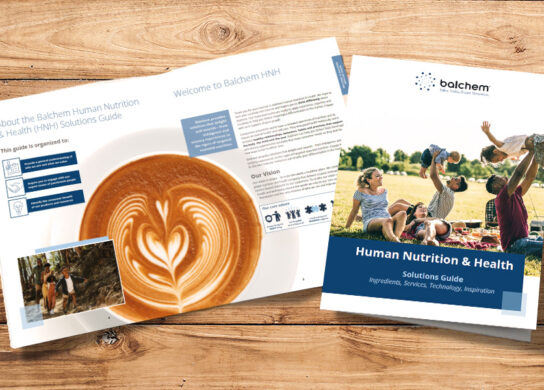
April 24, 2023Solutions Guide
Balchem® Solutions Guide We hope to turn your curiosity into interest and inspire you to think differently about Balchem. Within … |
|

March 21, 2023Creative Cereal Solutions
Healthy Ways to Start the Day Starting your consumer’s day with essential nutrients has never been easier… or tasted better. … |
|

February 14, 2023Today’s Consumers Seek Solutions for Cognition
Today’s Consumers Seek Solutions for Cognition Our team of experts conducted research on how consumers are seeking better solutions to … |
|

February 1, 2023Essential Minerals that Support Heart Health
National Heart Month February is American Heart Month!1 American Heart Month is a time to focus on and bring awareness … |
|

January 11, 2023Milk Solutions
Worldwide, over 6 billion people consume milk or milk products. Containing 13 essential nutrients, it’s no wonder milk products have … |
|

January 3, 2023Nutrient Deficiency Among Children
Nutrients Are Essential for Children New data shows that the prevalence of nutrient deficiencies among children is alarmingly high – and … |
|

December 30, 2022New Year, New You! Creatine MagnaPower® Performance Benefits
Performance Benefits of Creatine MagnaPower® The New Year brings new commitments for a new you – and for many people, … |
|

November 28, 2022Fortifying Dairy with Ferrochel ®
Ferrochel ® Ferrous Bisglycinate Chelate Iron is an essential mineral and its primary role is to serve as a major … |
|

June 21, 2022Disrupted Consumer
Disrupted Consumer Balchem’s strategic marketing teams can help your business turn consumer trends and insights into winning products that promote … |
|

June 14, 2022Kappa Bioscience Acquisition
Balchem has announced the acquisition of market-leading vitamin K2 producer Kappa Bioscience. |
|

May 18, 2022VitaCholine® Enhances Maternal DHA Status
A paper just published in The American Journal of Clinical Nutrition (AJCN) highlights the unique role choline plays in enhancing docosahexaenoic acid (DHA) status during pregnancy. |
|

March 28, 2022Iron and Women of Childbearing Age
If you’re an adult woman in the United States, the chances of not meeting your needs for iron, or worse – being iron deficient – are actually fairly high. |
|

January 10, 2022Groundbreaking Study Reinforces Need for Increased Choline Supplementation During Pregnancy
New research from Cornell University finds that doubling recommended prenatal choline significantly improved childhood brain performance. New Hampton, NY, (January … |
|

May 2, 2021Nutrients during Pregnancy are Essential
May 2nd is National Baby Day and we’re celebrating, you guessed it, babies! The smallest and newest members of society require special diets. From conception through early childhood a baby’s brain develops rapidly, setting the foundation for our lifelong cognitive health and performance. |
|

March 17, 2021Examining the Research on the Sleep Health Benefits of Magnesium (Part 2)
Insomnia is a disturbance to proper sleep patterns and quality. The effect of magnesium, vitamin B complex, and melatonin supplement … |
|

March 16, 2021Examining the Research on the Sleep Health Benefits of Magnesium (Part 1)
Did losing an hour’s sleep with Daylight Saving Time change leave you feeling a bit groggy? Curious how Magnesium from … |
|

March 8, 2021Different Variegate Types
Water-Based Variegate Types Water-Based variegate types are stabilized sugar syrups with fruits, cocoa, flavorings, and/or colors added. The mainstream flavors … |
|

February 26, 2021Benefits of Creatine Supplementation
Most everyone has heard about the potential benefits of creatine supplementation for sport performance, as well as skeletal muscle enhancement … |
|

February 26, 2021What Makes A Real and Biologically Functional Nutritional Chelates
For over 50 years, Albion Minerals has been the leading global supplier of chelated minerals. Albion has been manufacturing amino … |
|
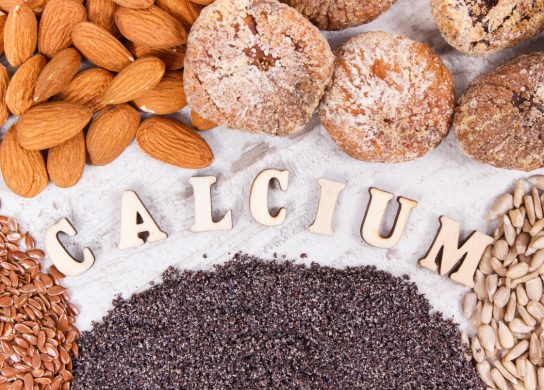
February 26, 2021Calcium Supplements – Not As Easy As Advertised
If you watch TV, you’ve likely seen a commercial for a particular brand of antacid that claims to not only … |
|

February 26, 2021Deciphering Supplement Labels
If labeling on supplement package labels has ever seemed confusing, you’re not alone. This newsletter aims to take some of … |
|

February 26, 2021Minerals and Your Skin
Your Skin – Your Largest Organ As the outermost covering of your body, your skin is a vital protector from … |
|
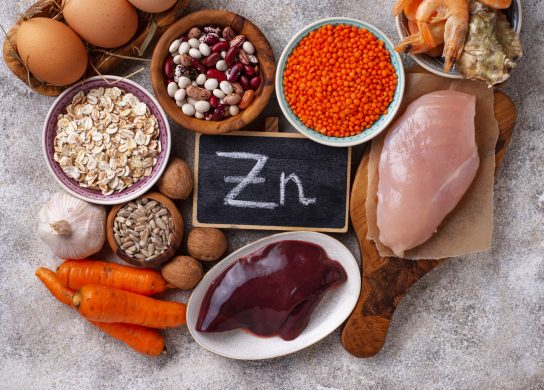
February 26, 2021Zinc and Arginine
A compilation of research updates on the importance of Zinc The Immune System and Zinc Zinc plays a central role … |
|

February 26, 2021Sports, Exercise, and Zinc
Sports, Exercise, and Zinc Research concerning the relationship between sports, exercise, and mineral nutrition has been in progress for a … |
|

February 26, 2021How Safe Is Your Supplementation?
Minerals, Trace Minerals and Ultra Trace Minerals There are 106 elements listed in the Periodic Table of Elements. But what … |
|

February 26, 2021Trace Minerals for Heart Health
There are a variety of cardiovascular disorders, and there are many causes. Nutrition, which includes minerals and trace minerals, plays … |
|

February 26, 2021Calcium Supplementation: Still a Necessity – But is It Safe?
In the last few years, there have been a few published clinical studies that link calcium supplementation to health problems. … |
|
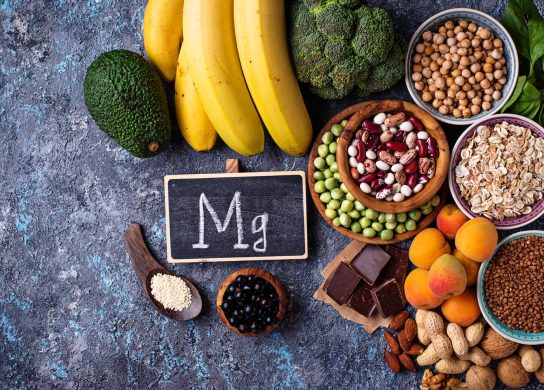
February 26, 2021All About Magnesium
This special form of magnesium is a chelate which binds magnesium with lysine, an essential amino acid that is a … |
|
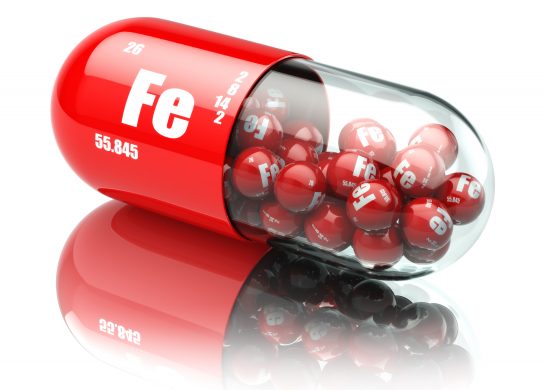
February 26, 2021Iron Supplements: Challenges and Solutions
There are many reasons why iron is often considered a challenging supplement; chiefly, gastric side effects and undesirable taste. In … |
|

February 26, 2021Minerals for Sports Performance and Exercise
There is no question that sports performance, intensive training, and endurance sports (marathon runners, triathletes, etc.) result in a more … |
|

February 26, 2021Minerals Involved with Weight Loss
It has been observed for some time that the incidence of people being overweight and the incidence of obesity are … |
|

February 26, 2021Supporting Brain Function with Minerals
Cognitive Function: An intellectual process by which one becomes aware of, perceives, or comprehends ideas. It involves all aspects of perception, … |
|

February 26, 2021Trace Minerals Fight Against Free Radicals
Radical Oxygen Species (ROS), or free radicals, are unstable toxic by-products of normal oxygen metabolism. Some of their main targets … |
|

February 25, 2021The Role of Minerals in Supporting Thyroid Health
The Role of Minerals in Supporting Thyroid Health Hypothyroidism is one of the most common health issues encountered in the … |
|

February 25, 2021Minerals for Detox
Spring Cleaning – Detoxification and Cleansing In the springtime it is common to find that people want to get their … |
|

February 25, 2021Feel the Rhythm – Minerals for Heart Health
The cardiac muscle (or heart muscle) makes up the bulk of the heart’s mass. This muscle is an extremely specialized … |
|

February 25, 2021Healthy Mother, Healthy Baby: Prenatal Nutrition
Key Nutrient Needs Pregnancy places increased nutritional needs on the body of the expectant mother, and her diet has a … |
|

February 25, 2021Lifelong Benefits of Choline in Pre-Natal Nutrition
Choline Helps Provide Optimal Nutrition for a Happy, Healthy Baby Scientific evidence continues to build supporting the importance of choline … |
|

February 25, 2021Magnesium and Brain Health
Magnesium, Energy, and The Brain Magnesium plays significant roles within many of the body’s tissues and organs, including the brain. … |
|
|
November 27, 2020Leftover Safety Tips
Leftovers are the 2nd best part of Thanksgiving…right behind the first time you enjoy the meal! Since this holiday guest list may be shorter than other years, we want to make sure your abundance of leftovers are enjoyed safely. |
|
|
September 10, 2020I Dip, You Dip, We Dip! All About Kalva Cones
Our market leading brand, Kalva® Dip Coatings, allows for an exciting and extensive list of flavors and capabilities. |
|
|
May 4, 2020Variegates 101
You know that gooey caramel we all love? That deliciously salty yet still sweet chocolate peanut butter swirl? Or those sea salt cookie fudge ribbons with crunchy cookie bits inside? |
|
|
February 1, 2016Balchem Corporation Acquires Albion International, Inc.
New Hampton, New York, February 1, 2016. Balchem Corporation (NASDAQ:BCPC) today announced that it acquired Albion International, Inc., a privately held … |
